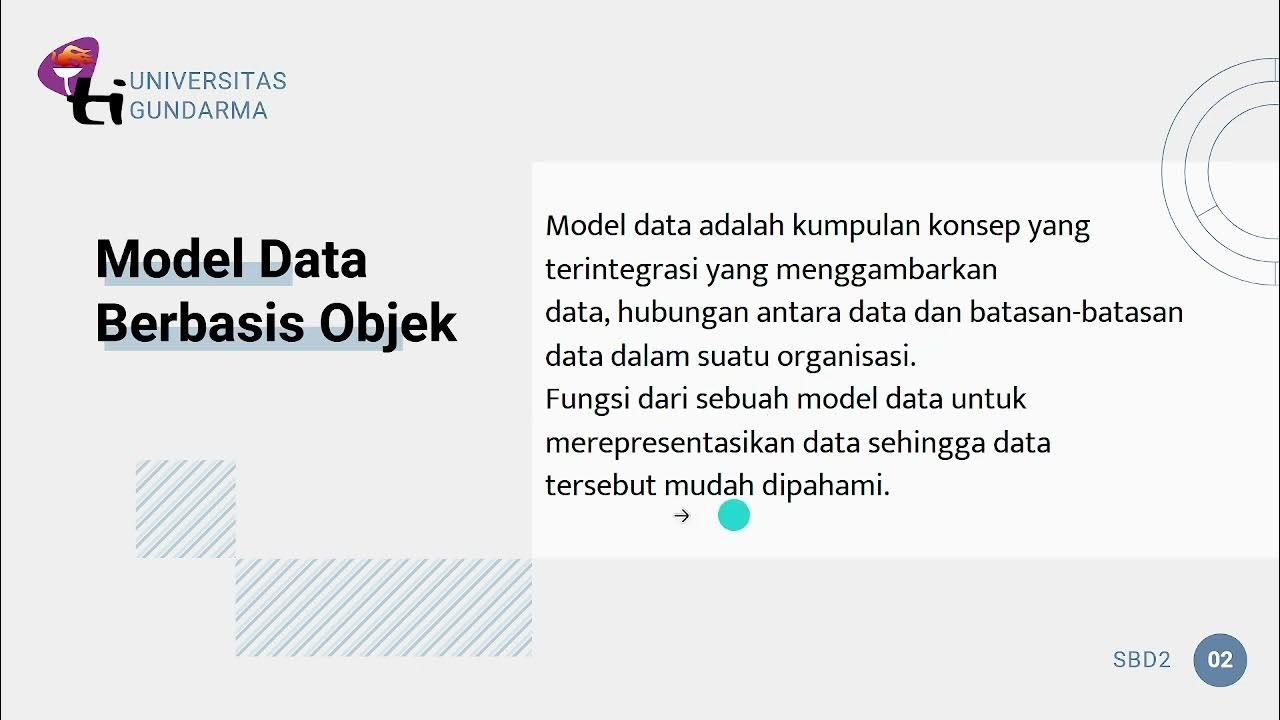ADBMS: Unit 1: Lecture 1: Database Concepts, Introduction to Transaction Control Language.
Summary
TLDRThis video introduces an advanced course on database management systems, covering key topics like normalization, transaction control, and relational databases. The course emphasizes practical operations such as creating tables, manipulating data, and executing database transactions. Viewers are encouraged to subscribe for ongoing lessons, including examples on data handling and SQL commands. The speaker stresses the importance of understanding database structures and transactions, offering real-world applications like fund transfers and data updates. The tutorial format blends technical explanations with hands-on examples, aimed at computer engineering students and professionals interested in mastering database systems.
Takeaways
- 😀 Introduction to advanced database management systems (DBMS), covering essential topics like normalization and transaction control.
- 😀 Emphasis on the importance of understanding data and its transformation into meaningful information in DBMS.
- 😀 Explanation of data manipulation operations, such as inserting, deleting, and updating data, which are central to DBMS functionality.
- 😀 Discussion on transaction control languages and how they manage database operations within a transactional context.
- 😀 Overview of relational databases and how entities like students, teachers, and courses are modeled using tables and relationships.
- 😀 Importance of understanding database operations such as CRUD (Create, Read, Update, Delete) to manage data effectively.
- 😀 Encouragement to engage with educational content through subscriptions, promoting a learning environment based on videos and interactive tutorials.
- 😀 Introduction to various types of database models, including relational models, and their applications in real-world scenarios.
- 😀 A focus on the role of database management systems in structuring and managing large sets of interrelated data for practical use.
- 😀 Explanation of how transaction control languages (DCL) are used to manage the execution of database operations, ensuring consistency and reliability.
- 😀 Real-world application examples, such as fund transfer in bank accounts, to illustrate database operations like transactions and data integrity.
Q & A
What is a database management system (DBMS)?
-A Database Management System (DBMS) is a software used to manage and organize data in databases. It helps in storing, retrieving, and manipulating data while ensuring security, integrity, and consistency.
What is normalization in the context of databases?
-Normalization is the process of organizing data in a database to avoid redundancy and ensure data integrity. It involves breaking down tables into smaller tables and defining relationships between them.
What is a transaction in a DBMS?
-A transaction in a DBMS is a sequence of operations performed as a single unit of work. It ensures that the database remains in a consistent state, even in cases of system failures. It follows the ACID properties (Atomicity, Consistency, Isolation, Durability).
What are the main types of operations performed in a database management system?
-The main operations in DBMS include creating, reading, updating, and deleting data, often referred to as CRUD operations. Other operations include transaction control, data manipulation, and managing relationships between data entities.
What is the difference between data and information in a DBMS context?
-Data refers to raw facts and figures, such as numbers or text. Information, on the other hand, is processed data that is meaningful and useful for decision-making. A DBMS transforms data into information by organizing it effectively.
What are the key features of a relational model in databases?
-A relational model organizes data into tables (relations) consisting of rows and columns. Each table represents a set of related data, and the relationships between tables are defined through keys (primary and foreign). This model ensures data integrity and flexibility.
What is a primary key in a relational database?
-A primary key is a unique identifier for each record in a database table. It ensures that each row is distinct and can be easily referenced from other tables using foreign keys.
How does a transaction control language (TCL) work in DBMS?
-Transaction Control Language (TCL) is used to manage the changes made by DML (Data Manipulation Language) statements. TCL commands like COMMIT, ROLLBACK, and SAVEPOINT control the transaction's execution and maintain the database's integrity.
What is the role of a foreign key in a relational database?
-A foreign key is a column or set of columns in one table that uniquely identifies a row in another table. It establishes a link between the two tables, ensuring data consistency and integrity by enforcing referential constraints.
What are the advantages of using a DBMS in a business environment?
-A DBMS provides centralized data management, ensures data integrity, reduces redundancy, and allows for secure data access. It also supports efficient querying and reporting, and helps businesses manage large volumes of data with consistency and reliability.
Outlines

This section is available to paid users only. Please upgrade to access this part.
Upgrade NowMindmap

This section is available to paid users only. Please upgrade to access this part.
Upgrade NowKeywords

This section is available to paid users only. Please upgrade to access this part.
Upgrade NowHighlights

This section is available to paid users only. Please upgrade to access this part.
Upgrade NowTranscripts

This section is available to paid users only. Please upgrade to access this part.
Upgrade NowBrowse More Related Video
5.0 / 5 (0 votes)





